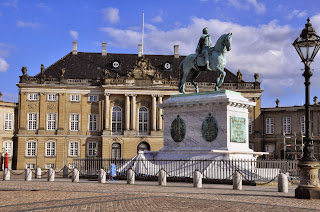Week 7 - Denmark/ Sweden
Welcome to the North. Denmark and Sweden are the leading countries in living and design. This can be seen in these half timber houses which are estimated to be built around the 18th hundreds and are still standing today not to mention people still living in them.
Located in Gillileje - Denmark. Straw roofs are still popular in Denmark and was used in the olden days for insulation during the cold Months. Still very effective to this day.
This view is off a courtyard in the town of Malmo - Sweden. Even though this building may have had minor renovations throughout its life, its still supported by the original timber frames(painted black).
Roskilde Domkirke is a cathedral of the Lutheran Church of Denmark.
This church was constructed during the 12th and 13th centuries and incorporates both Gothic and Romanesque architectural features in its designs. The cathedral has been the main burial site for Danish monarchs since the 15th century.
Turing Torso located in Malmo- Sweden:
HSB Turning Torso is the tallest skyscraper in Sweden and the Nordic countries built in 2005 and rotates 180 degrees for the bas to the top. The tower reaches a height of 190 metres (623 feet) with 54 storeys - 147 apartments, relax/lounge/spa/gym, wine cellar followed by around-the-clock concierge service 365 days a year.
Egeskov Castle:
Amalienborg residence:
Home to the Queen of Denmark, not to mention the future King and Queen - Frederick and Mary
This is an image of 4 new modern apartments built in Denmark with a view of the ocean. Example of why Denmark is so recognised for its design. In the 1960s, Danish architects entered the world scene with their highly successful Functionalism which is still used today.
Lego representation of Nyhav - Denmark. Even though Denmark is mainly known for their design, some would argue they are even more recognised for their lego!
Another famous building technique that Denmark is known for.
Thanks again for reading our Blogs. Stay tunned for next week as we visit our last historic design stop in Alsace - France.
















